Media









AS & A Level





Ian Marshall, Nicola Naisbett & Tina Stoklosa

















Shaftesbury Road, Cambridge CB2 8EA, United Kingdom
One Liberty Plaza, 20th Floor, New York, NY 10006, USA
477 Williamstown Road, Port Melbourne, VIC 3207, Australia
314–321, 3rd Floor, Plot 3, Splendor Forum, Jasola District Centre, New Delhi – 110025, India
103 Penang Road, #05–06/07, Visioncrest Commercial, Singapore 238467
Cambridge University Press is part of the University of Cambridge. It furthers the University’s mission by disseminating knowledge in the pursuit of education, learning and research at the highest international levels of excellence.
www.cambridge.org
Information on this title: www.cambridge.org/9781009262248
© Cambridge University Press & Assessment 2023
This publication is in copyright. Subject to statutory exception and to the provisions of relevant collective licensing agreements, no reproduction of any part may take place without the written permission of Cambridge University Press.
20 19 18 17 16 15 14 13 12 11 10 9 8
Printed in Mexico by Lithográfica Ingramex, S.A de C.V
Printed in Great Britain by Ashford Colour Press Ltd.
A catalogue record for this publication is available from the British Library
ISBN 978-1-009-26224-8 Coursebook with digital access
ISBN 978-1-009-26225-5 Digital coursebook
Cambridge University Press has no responsibility for the persistence or accuracy of URLs for external or third-party internet websites referred to in this publication, and does not guarantee that any content on such websites is, or will remain, accurate or appropriate. Third-party websites and resources referred to in this publication have not been endorsed by Cambridge Assessment International Education. Information regarding prices, travel timetables, and other factual information given in this work is correct at the time of first printing but Cambridge University Press does not guarantee the accuracy of such information thereafter.
The practice questions, accompanying marks and mark schemes included in this resource are an opportunity to practice exam skills, but they do not replicate examination papers and are a guideline only.
It is illegal to reproduce any part of this work in material form (including photocopying and electronic storage) except under the following circumstances:
(i) where you are abiding by a licence granted to your school or institution by the Copyright Licensing Agency;
(ii) where no such licence exists, or where you wish to exceed the terms of a licence, and you have gained the written permission of Cambridge University Press;
(iii) where you are allowed to reproduce without permission under the provisions of Chapter 3 of the Copyright, Designs and Patents Act 1988, which covers, for example, the reproduction of short passages within certain types of educational anthology and reproduction for the purposes of setting examination questions.
Cambridge International copyright material in this publication is reproduced under licence and remains the intellectual property of Cambridge Assessment International Education. Practice questions and sample answers have been written by the authors. In examinations, the way marks are awarded may be different. References to assessment and/or assessment preparation are the publisher’s interpretation of the syllabus requirements and may not fully reflect the approach of Cambridge Assessment International Education.
Cambridge International recommends that teachers consider using a range of teaching and learning resources in preparing learners for assessment, based on their own professional judgement of their students’ needs.












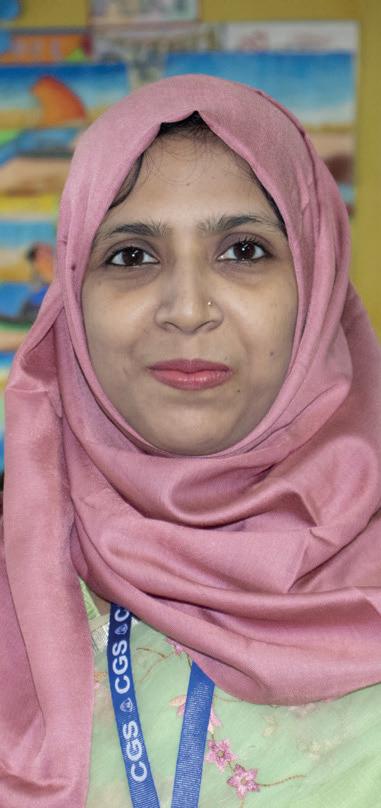


Endorsement indicates that a resource has passed Cambridge International’s rigorous quality-assurance process and is suitable to support the delivery of a Cambridge International AS & A Level Media Studies 9607 syllabus. However, endorsed resources are not the only suitable materials available to support teaching and learning, and are not essential to be used to achieve the qualification. Resource lists found on the Cambridge International website will include this resource and other endorsed resources.
Any example answers to questions taken from past question papers, practice questions, accompanying marks and mark schemes included in this resource have been written by the authors and are for guidance only. They do not replicate examination papers. In examinations the way marks are awarded may be different. Any references to assessment and/or assessment preparation are the publisher’s interpretation of the AS & A Level Media Studies 9607 syllabus requirements. Examiners will not use endorsed resources as a source of material for any assessment set by Cambridge International.
While the publishers have made every attempt to ensure that advice on the qualification and its assessment is accurate, the official AS & A Level Media Studies 9607 syllabus, specimen assessment materials and any associated assessment guidance materials produced by the awarding body are the only authoritative source of information and should always be referred to for definitive guidance. Cambridge International recommends that teachers consider using a range of teaching and learning resources based on their own professional judgement of their students’ needs.
Cambridge International has not paid for the production of this resource, nor does Cambridge International receive any royalties from its sale.
For more information about the endorsement process, please visit www.cambridgeinternational.org/endorsed-resources.
Cambridge International copyright material in this publication is reproduced under licence and remains the intellectual property of Cambridge Assessment International Education.



















This suite of resources supports learners and teachers following the Cambridge International AS & A Level Media Studies syllabus (9607). The components in the series are designed to work together and help learners develop the necessary knowledge and skills for this subject. With clear language and style, they are designed for international learners.

The Coursebook is designed for learners to use in class with guidance from the teacher. It offers complete coverage of the Cambridge International AS & A Level Media Studies syllabus. Each unit contains in-depth explanations of media studies concepts, definitions of key words with a variety of activities, case studies and images to engage learners. Self-evaluation checklists at the end of each unit enable learners to revise, evaluate their understanding and progress, and reflect on their learning.
The Teacher’s Resource is the foundation of this series because it offers inspiring ideas about how to teach this course. It contains teaching guidance, lesson plans, suggestions for differentiation, assessment and language support, and downloadable worksheets.
Throughout this book, you will notice lots of different features that will help your learning. These are explained below.
Learning intentions open each unit and section. These help you navigate through the coursebook and indicate important concepts in each section.
These explain how the coursebook’s themes are integrated with the key concepts in the Cambridge International AS & A Level Media Studies syllabus.
This feature contains questions and activities on subject knowledge you will need before starting each section. It also provides a point of departure for inquiry.
These practical tasks allow you to understand and apply relevant skills, as well as opportunities to produce your own work either individually, or in pairs or groups.
These boxes give you an opportunity to apply your learning to real-life scenarios and consider the skills required in the media industry.
Tips are provided throughout this coursebook to help with your learning. The tips might cover how to avoid common errors or misconceptions, evaluation and analysis, or guidance on how to approach your work.
Key vocabulary terms are introduced in the text when they are first introduced. An accompanying definition explains the meanings of these words and phrases. You will also find definitions of these words in the Glossary at the back of this book.
Reflection questions direct you to look back on an activity and encourage you to think about your learning.
This feature enables you to reflect on your learning and assess whether you have achieved the learning intentions for the unit. If you identify any areas that you are less confident in, try to put together a list of actions for improving these.
This feature provides ideas about further reading or activities you can do as extension work, related to the topic.
This coursebook is for those that wish to explore how media impacts the many facets of our existence. The included information and activities prompt you to investigate the roles of media in your personal lives as well as your larger communities. You will also learn how to ‘read’ and analyse the media – processes that will aid you as you navigate through our media saturated world.
This coursebook supports the Cambridge International AS & A Level Media Studies syllabus (9607) for examination from 2024. Additionally, this coursebook supports students interested in developing a deep understanding of media’s effects on society.
A defining feature of this book is the inclusion of activities that prompt you to study the media sphere within your local or national contexts. This book is for all students wishing to explore the media, regardless of where you live. The book begins with activities that encourage you to reflect upon your own relationship with media. As you progress through the units and build your knowledge base about media-related topics, you will be asked to re-evaluate your relationship with media and reflect upon how it evolves over your course of study.
During your reflection processes, you will also be prompted to contemplate how you can use media-related skills in the world beyond academia. The ‘Think like a …’ sections ask you to put yourself in the roles of various media or communications related jobs. These sections are developed to help give you a small taste of the array of opportunities in fields connected to the media industry.
Studying media is about closely analysing choices. When you take a picture of a friend or write an essay for a class, you are making a series of choices during the development of the new content. We tend not to view our processes in this manner because if we did so, everything would most likely take more time to create. However, when embarking upon the in-depth study of media, it is essential to slow down a bit and take time to think about how all aspects of the creation process have meaning. This book strives to help you do just that – slow down and mull over how all the choices matter. You will get much more value out of the media when you learn to truly pay attention and analyse what you consume. Enjoy your media studies and use this book as an invaluable resource, guide and support towards achieving success on your course.
In this unit, you will:
• learn basic concepts associated with media studies


• consider how and why you consume media






• reflect upon the role of media in developing your sense of self and the world.

To study media is to study the process in which we document our lives. Before you delve into the intricacies of media production and analysis, you must first understand your relationship with media.
Before you begin this topic, think about:
• what you already know about studying media
• what you would like to know about studying media.
We will return to this point at the end of the unit.
This unit links to the key concept of audience. In media studies, studying how and why audiences consume media is an essential process. During this unit, you will reflect upon your practices as an audience member to various types of media.
After studying this section, you will be able to:
• define and explain basic concepts and key terminology for studying media
• understand the concepts of media forms and platfor ms
• evaluate the effects of media.
Think of a message, idea or principle that is important to you. Keep it simple. Now, using only one piece of paper, develop something that creatively conveys this message.
Share your creation with a small group (four to five students). Discuss the following questions:
• Did you create a piece of media?
• If so, what makes this a piece of media?
• If not, what would make this a piece of media?
When we hear the word ‘media’ we may have different perceptions of what this actually means. Like many aspects of our existence, our understanding of ‘media’ has evolved along with changes in society. Before we begin discussing the many topics that comprise media studies, we must first explore the concept of ‘media’.
The most common definition of ‘media’ refers to the means in which we communicate. This includes both the media forms and the media platforms that are used to disseminate information to the masses.
Media forms, such as print, have been used for communication purposes for centuries. Other media forms, such as film, TV, radio and video games, are more contemporary methods of communication.
Work with a partner to discuss how various media forms are used to communicate information in your city or country. Consider the types of information and content that are commonly communicated through these forms. Copy and complete Table 1.1 with specific examples of content that are communicated through the listed forms.
media forms: the specific medium used to communicate meaning.
Newspapers
Magazines
Advertising
Table 1.1: Content communicated through different forms
Review your tables and consider these questions:
• Which media forms are most commonly used to disseminate content that focuses on entertainment?






• Which media forms disseminate informational content?
• Which media forms disseminate both types of content?

The media platform is the distribution method for the media form. For example:
• Social media is an online media platform that often distributes media forms such as print or music but can also include videos and images.
• Broadcast media can be a digital or online platform that often distributes TV.
• Video games are distributed through a digital media platform.
It is important to note that as technology evolves, media forms may be able to be distributed through more than one media platform. Magazines are a great example of this. Although most magazines are now distributed digitally, many are also still available in physical form.
Consider how the following content is typically distributed. Copy Table 1.2 and place a tick (✓) in the boxes for all types of distribution methods available for each form.
Media form
Newspapers
TV shows
Video games
Magazines
Music
Podcasts
Books
Memes
VOCABULARY
media platform: the method of distribution for a media form –digital, online or physical.
Table 1.2: Distribution of content
Working in a group of two to three, share your tables and engage in a discussion about your conclusions.
• Which types of content are distributed using more than one media platform?
• What media platform is used least?
The term ‘media’ is also used to refer to the organisations and people that create and disseminate messages through media platforms. Quite often when we say ‘the media’, we mean the news organisations, film, TV and music production companies, publishers and broadcasters that are responsible for developing the content that we consume.
When creating media content, one of the first choices is deciding which media forms and media platforms to utilise. Consider the following scenarios. As a content creator, what choices would you make? Which are the most suitable media forms and platforms?
• Scenario 1: You want to advertise a new mobile game geared towards people between the ages of 21 and 35.
• Scenario 2: You are creating a documentary about high-end, environmentally friendly travel destinations.
• Scenario 3: You wish to spread the word about an upcoming play at your local amateur theatre.
We rely heavily on ‘the media’ to develop content that helps us understand what is happening in our communities and the world at large. We also rely on ‘the media’ to entertain us with various forms of art or content that offers pure escapism. What organisations or specific directors come to mind when you think about your favourite films? Who has created some of your favourite songs? All these creators from ‘the media’ have had some impact upon your existence.
Working with a partner, conduct research to find the content and creators for each of the following media forms for each of the past three years (search for the answers only within your country):
• top grossing film
• most watched show on broadcast TV
• best-selling novel
• top music single of the year. Review your findings. Are there companies or creators that appear in more than one media form? If so, what conclusions can you make about ‘the media’ in your country?
It is important to also remember that with advanced technology at our fingertips, almost anyone can be a content creator. If you have ever posted anything on social media or created a short film or piece of music, you are a content creator. Therefore, an important question to consider is, are we all now members of ‘the media’?
Much of our existence is imbued with media. Due to around-the-clock access to technology and online information, it is not an over-exaggeration to say that we are constantly exposed to media content. Therefore, it is necessary to enhance our understanding of media.
The term ‘media’ refers to modes of communication. When we say ‘the media’, we are often referring to the companies and people that develop media content.
The modern technology that we use to distribute and access media was integrated into society quickly. As we were enjoying this quick, efficient access, we had little time to truly think about what we were accessing or how it affects our lives. When you learn how to analyse media content, you are less apt to be manipulated and more apt to expose yourself to media content that enhances your life rather than sucks away your time.
Many of the skills that are developed through studying media can be used in other courses and other facets of your life. In addition to improving your analysis skills, you will also work with a variety of technologies, research major organisations and create media products for a variety of purposes. The most profound skills development will occur as you work on long-term projects. During these projects you will enhance your planning, research and production skills.
ACTIVITY 1.4
Assess your current abilities in the following skills – be honest!

Communicating my ideas

Analysing media content
Creating new products using technology



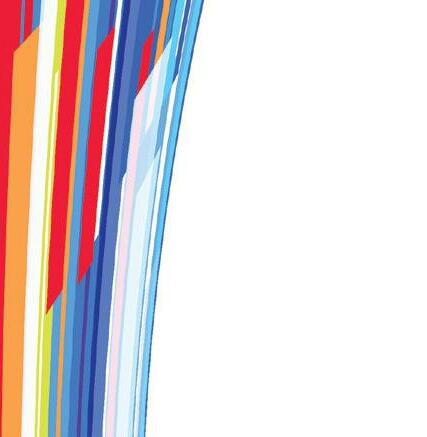
Managing my time well while working on long-term projects








Creating a schedule for myself when working on long-term projects





Working within teams to develop something new
Conducting research using credible sources
Table 1.3: Skills audit

Review your learning
• Which skills will help you as you work through this course?
• Which skills are you most looking forward to improving?

Media savvy individuals are thriving within our media-driven world. Many of the most sought-after jobs are those that require the skills developed through studying media. When most people think of jobs in the media, they immediately think about media content creators. The realm of media-related jobs moves far beyond content creation. Content creators often work with a team of people that are all experts at different aspects of how to create the content.
There is also the business side of the media. This aspect requires the expertise of those working in finance, operations, marketing and various management positions.
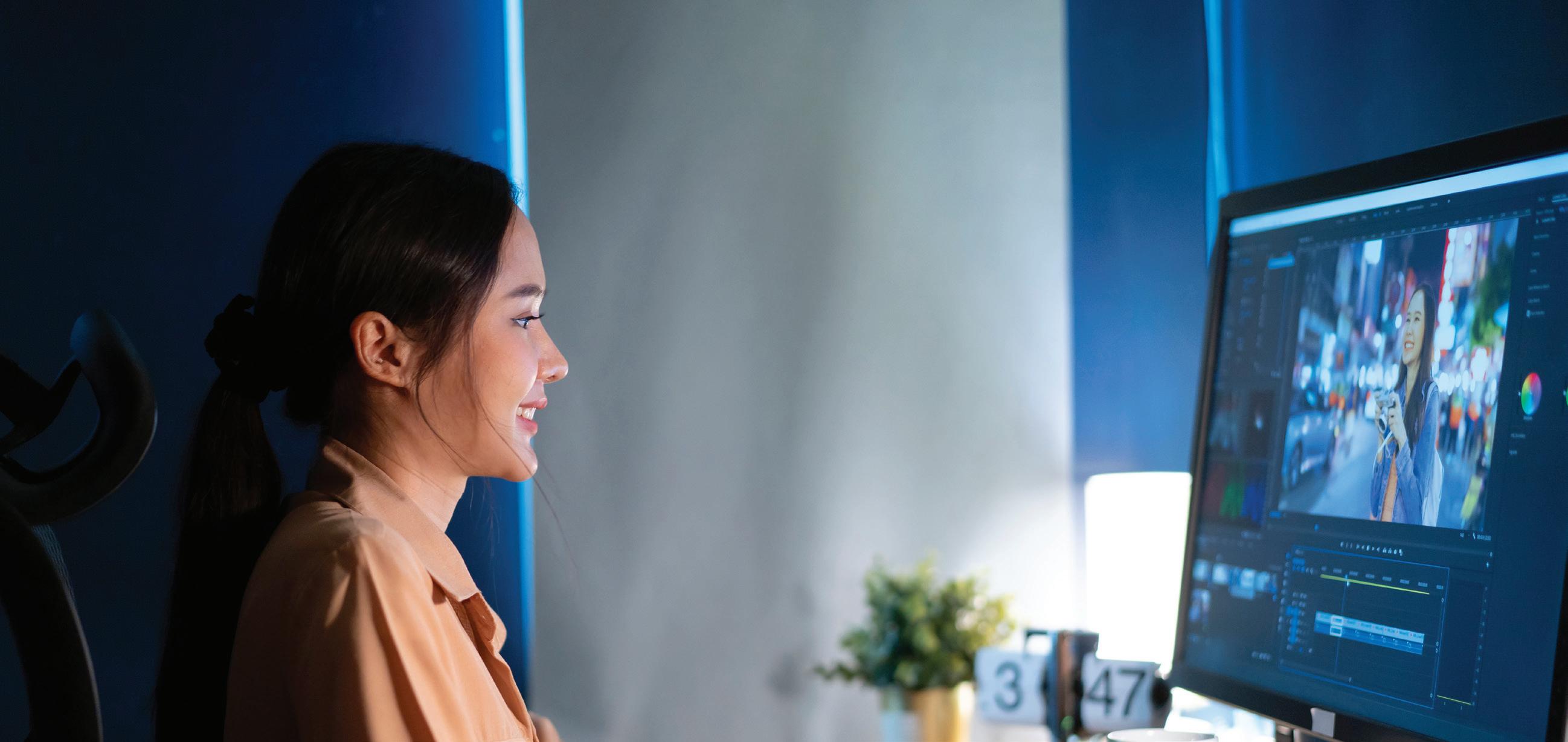
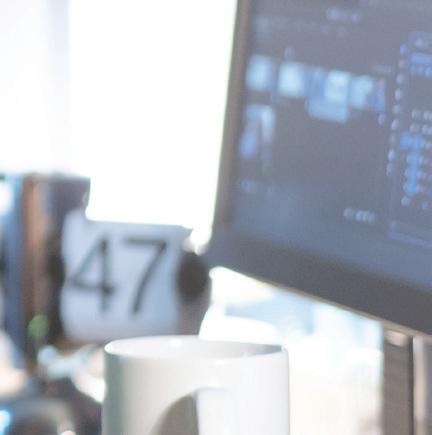



‘Media literacy’ is a concept that represents a main goal within a media studies course. Research this term. What information did you find? What does a ‘media literate’ person do when consuming media?



Choose a job within the media sphere and research the following:
• What qualifications are required for this job?
• What are the typical tasks?
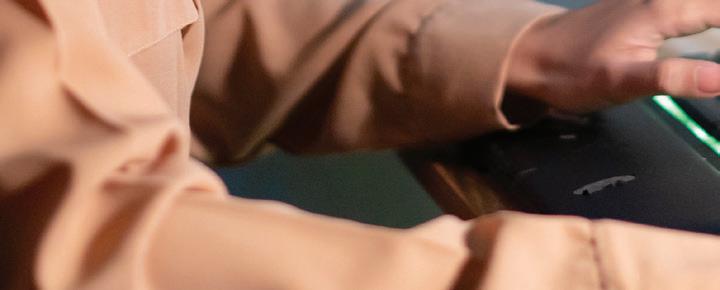
• How does this job relate to media studies?

Take a moment to reflect on the skills necessary for understanding media studies. After studying this section, complete this table:
You should be able to:
Define and explain basic concepts and key terminology for

After studying this section, you will be able to:
• reflect on the roles of media in your life
• assess your media usage habits: why you choose specific media and how often you use it
• understand the difference between active and passive media consumption
• evaluate how media impacts how you perceive the world.
Now that you have a better understanding of media, revisit the process you began in Section 1.1 of communicating a message, idea or principle that is important to you. Again, try to keep it simple. This time, choose the media form and platform that you think is most suitable for communicating this message. Share your piece of media with a small group (four to five students). Discuss the following questions:
• What is the most common media form chosen amongst the group? Discuss why this media form is used more often than others.
• If there is no common media form, discuss the reasoning behind the choices for each piece of media.
• Which media platform was chosen for each piece? Is there commonality here? Discuss the reasonings behind these choices.
Before you can even begin to reflect upon the role of media in your life, you must first consider an important question – why do I use media? What motivates you to wake up in the morning and grab your phone to check out social media posts? What makes you want to glance at the TV (even though it is really your parents that are watching)? What drives you to play video games after school instead of completing your homework? The reasons why we use media are varied and intensely personal. Although media studies requires you to explore why the masses use media, it is also vital to examine why you are drawn to use various pieces of media.
Do you find yourself using one media form more often than others? Perhaps you enjoy listening to music but don’t like to watch long films. Maybe you could spend
hours reading a book but find the short postings on social media a bit of a bore. Your preferences are often motivated by a variety of factors including personality, context and environment.
Take a look at the images in Figure 1.1

Which image do you like the most? What about the image entices you? Are you entertained by the silliness of the snail on the skateboard? Perhaps you like the creativity expressed through the mirror image on the floor of the chameleon against the black background. If you like the polar bear image you may appreciate getting a quick glimpse of a moment in time – especially one that is quite difficult to capture. Thinking about why we are drawn to one thing over another can help us understand our choices.

Reflect on why you tend to use various media. Next to each of the following media forms, write short descriptions of your motivations for using them:
• TV
• print (newspaper, magazines, books)
• film/movies
• social media
• video games
• music
• radio/podcasts.
For example:
• TV: to learn about the local news, watch sports events
Don’t think about how you use the medium just yet. For now, just write down what draws you to the medium.
Pair up with a peer and discuss your lists.
• Do you have similar motivations for consuming each media form?
• With which medium do you find different motivations for consumption?
consumption: the process of using or receiving something from another source.


Also, discuss why other people in your life use these same media forms.
• Are your parents’ motivations different from yours? What about your teachers’ motivations, or those of your younger siblings or cousins?
• Does age change the motivating factors for consuming each medium?










Typically, media consumption involves a purchase and payment, but not always directly. For example, it is free to use major web browsers, but information on your searches is gathered, stored, analysed and resold to other companies.

The ways that you choose to access and use media can play a key role in how you perceive the messages being delivered. For example, on many streaming sites all episodes of a TV show are available as soon as the show itself is released. You may choose to watch the full season of the show in one sitting or watch the episodes at your leisure. On the other hand, if you watch a TV show on a broadcast station, you will only be able to watch one episode per week at a specific time.
• The streaming option allows you to devour the entire season of the TV show in hours. You move from one episode to the next without much thought or reflection on what you just viewed. Before you know it, you have watched the entire season of the show and are ready to check out another one of the suggested offerings that show up in lieu of the next episode (which, sadly, will not be available for some time).
• The TV broadcast station option forces you to wait between episodes. You may build up a sense of anticipation wondering what is in store for your favourite character. Right before you are ready to watch the next episode, you must remember what happened during last week’s episode. When you finally get to the last episode, you feel invested in the story and the characters and are ready to get a sense of closure (or not – wretched cliffhangers!).
These two scenarios represent vastly different ways of exposing yourself to media. The relationship between you and what you are consuming is impacted by how you choose to engage with the product. Therefore, you need to reflect upon not only why you consume media, but how you consume media.

Working with a partner, ask each other the following questions and discuss your responses:





















• What piece(s) of technology do you typically use to consume media?







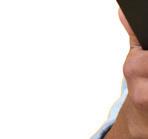

• Which media form do you consume the most? The least? Why?
• Choose two media forms and discuss the platforms that you use to consume them. How does the platform impact your consumption habits?
Consider what you learned about how your partner consumes media. Did you notice any similarities with your own media consumption practices?
Think about your typical day. As you are getting ready for school, do you listen to music? When you eat breakfast, do you focus on just eating or are you doing something else at the same time? On your commute to school, what do you see and hear? Do you look out of the window and see billboards or advertisements embedded in and around public transport? At school, do you read any books? Visit any websites? How about when you walk down the halls and corridors – do you see anyone wearing branded clothing? Although the questions above are only prompting you to reflect on a short time within your full day, there is a high likelihood that you consume some type of media shortly after you wake up and continue consuming, in one way or another, until you sleep again. We have developed a society where we are highly reliant on media consumption for both information gathering and entertainment. Consequently, many of us consume media during a large portion of our day.

A sociologist studies human behaviours through the observation of social interactions and societal structures. Think about a recent journey. Imagine you are a sociologist observing behaviours of your fellow travellers while they are in transit.
• What do you think you would observe?
• What activities are commuters engaged with while they travel?
• What duration of their travel time would they be engaged in the activities listed?
• How much of these activities would use media?
One of the best ways to understand your relationship with media is to monitor your media use for 24–48 hours. There are many ways to do this:
• If you have a smartphone, you can use a monitoring app or the internal screen time monitoring system. Although this does not offer a complete view of media use (we often consume media using tools other than a smartphone), it does offer a glimpse into the amount of time you spend using specific applications.
• A better way to monitor media use is to keep a media use log. Every time you find yourself consuming media, mark it down. Table 1.4 is a sample media use log.
After documenting your media use for 24–48 hours, reflect upon the following questions in a small group:
• What time of the day do you consume media the most? Why?
• Are you comfortable with your overall media use within a 24-hour period?
• When you are not consuming media, what are you typically doing?
• Are your media use habits consistent with those of your peers?
Now that you have reflected upon why, how and how often you use media, it is important to contemplate what you get in return from your media consumption. After you binge-watch that new TV show that everyone has been watching, what did you learn from the content? When you monitored your media usage for a day and found that you spent over two hours interacting with social media sites, are you content with how you spent that time? Our world asks us to consume media often, for various reasons, but it rarely asks us to slow down and take time to think deeply about whether the media we consume enhances our existence.
The ubiquity of modern technology at our fingertips also makes us media producers. Therefore, you must also remember to reflect upon what you get from creating media. When you take a picture and post on a social media site, what do you get in return? Are you comfortable with what you are – or are not – getting back?
Take a look at Figure 1.2. Imagine this shot is captured quickly, at a moment’s notice by the child’s mother. She happened to have her phone in her lap, noticed her son’s joy at being lifted by his father, grabbed her phone, framed the image quickly and pressed

the photo button. Why would she want to create this image? Two to three years from now, when she is looking through her pictures and stumbles across this one, what feelings may it invoke?
Now, imagine that this shot was posted on social media and shared with friends and family – including you. When scrolling through your social media feed, you see this moment in time captured and shared. What do you feel when you see this image? Do you benefit from taking the time to look, and perhaps even comment, on what you see?

Although you may not have the time (or energy) to question what you get out of all the media that you consume, it is helpful to start this process with the media that exhausts a great deal of your time. When you have a better understanding of how you benefit – or not – from media, you will choose to consume media that offers you a positive return.
The most basic way that we learn about the world is through observation of what is happening around us. Much of this observation involves consuming media. When you wish to learn about what is happening in your community, you watch the local news or read the local newspaper. You could also scroll through social media pages dedicated to discussing local concerns. Quite often, our lives do not allow us time to actively, critically consume all three of these media, so we pick and choose what works for us. Sometimes we choose what is easier or faster and sometimes we choose to consume media from sources we have learned to trust. Regardless of what motivates these choices, the outcome is consumption of media.
ACTIVITY 1.8
Working with a partner, discuss the following questions:
• What does it mean to get old?
• What age would you consider old? Elderly?
• Think about the people in your life that have reached an old age. What words would you use to describe them? What do you think they do during a typical day? What do you think they do for fun?

Now, view and discuss the images in Figure 1.3, and answer the questions that follow.
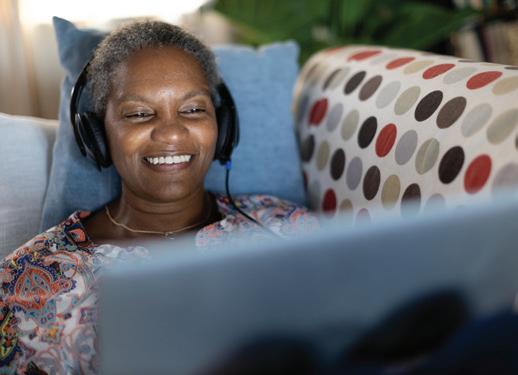
• How do these images illustrate the lives of those that have reached an old age?
• What connections do you see with your own lives?
• How do these images impact your perceptions about what it means to get old? Did your perceptions of old age change after seeing and discussing these images?
If we know that we will consume media in the quest to learn about the world, our next choice is to decide if we consume actively or passively. Active media consumption involves making deliberate choices. For example, you choose to subscribe to a specific science-based magazine because the majority of the writing staff also work in science research. You read the articles online and question the conclusions or re-read some of the text so you develop a deep understanding of the concept. As an active consumer you also wish to continue the conversation and create a comment to include in the ‘user comments’ area of the page.
On the other hand, passive media consumption does not involve any premeditation or deep thought while consuming. Much of social media is designed for passive consumption, hence the scrollable nature of the content. A passive consumer scrolls through content, not because you decide to specifically seek out any of it, but because it is something to do. Although passive consumption of media is often characterised as being ‘mindless’, some part of your brain is still registering the content and therefore, it does have an effect on your perception.
The type of consumer that you choose to be will lead to how much media impacts your perceptions of the world. Are you an active or passive consumer of media?
Stuart Hall argues that media audiences are active consumers that often consume media through the lens of their own experiences and social contexts. The Active Audience Theory suggests that because audiences make sense of media through what they know and how they live, the intended message of the media creator may not be what is understood by audiences. Audiences often interpret or alter media messages to support their own beliefs which are directly connected to their social context.
Have you ever watched a film or TV show and related, intimately, to one of the characters? This character may ‘live’ an entirely different existence than you, but there is still something about the character with which you connect. Perhaps watching this character live out their fictional stories made you realise something about yourself that you had never quite admitted. Maybe this character struggled with similar personal demons and found a way to overcome them – and inspired you to do the same.
Our coexistence with each other and the media that we create and consume naturally leads to media influencing our sense of self. There is no instruction manual for how
active media consumption: the process of choosing and interacting with media in a deliberate and engaged way.
passive media consumption: little to no intention or engagement is involved in the use of media.
to best use the media available at our fingertips. Nor do we have strict limitations on how much media we create and consume. We all have the responsibility to learn how to navigate the world of media in ways that are beneficial.
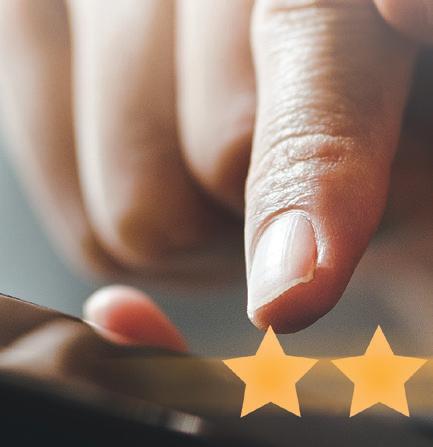
If we bring a bit of ourselves to everything we do, everything we watch, everything we listen to, everything we read, how much do we take away? How much of the media you consume had a hand in creating your sense of self? How much would you like it to?

This section prompted you to think deeply about the ways in which media has an effect on various aspects of your life. Are you comfortable with your findings? What changes would you like to make to your media consumption habits? What are you doing well?
Take a moment to reflect on the skills necessary for understanding media consumption. After studying this section, complete this table:
You should be able to:


Reflect on the roles of media in your life
Assess your media usage habits: why you choose specific media and how often you use it

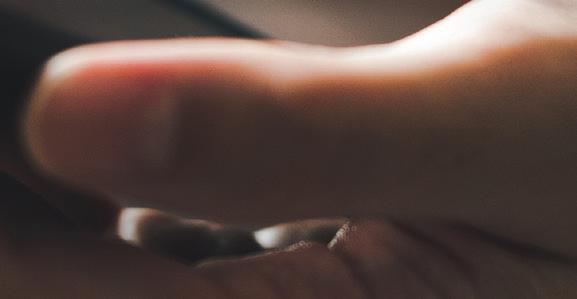








Understand the difference between active and passive media consumption

Explore how media impacts how you perceive the world


Now return to the list you made at the beginning of this unit of what you already knew about studying media studies and what you wanted to learn. Think about what you have learned during this unit and add these points to your list.
Media consumption is often impacted by your environment. Therefore, it is helpful to understand the media consumption habits of those around you. Create a short media consumption survey or media monitoring task and ask a group of peers or family members to complete it. Review the results and see if there are any connections to your own media consumption habits.